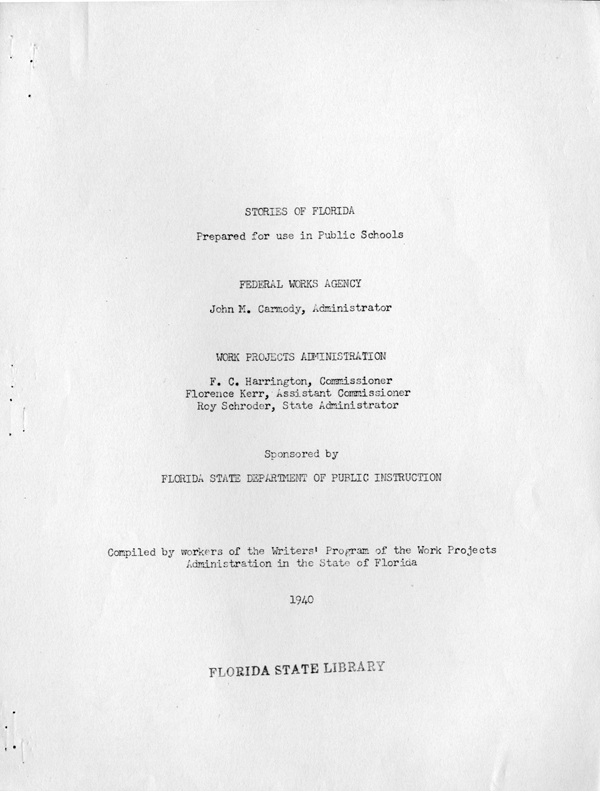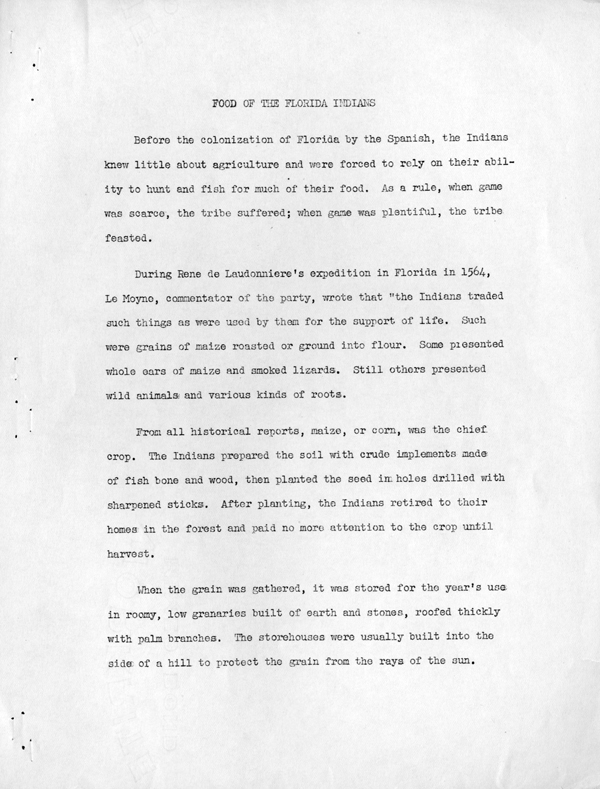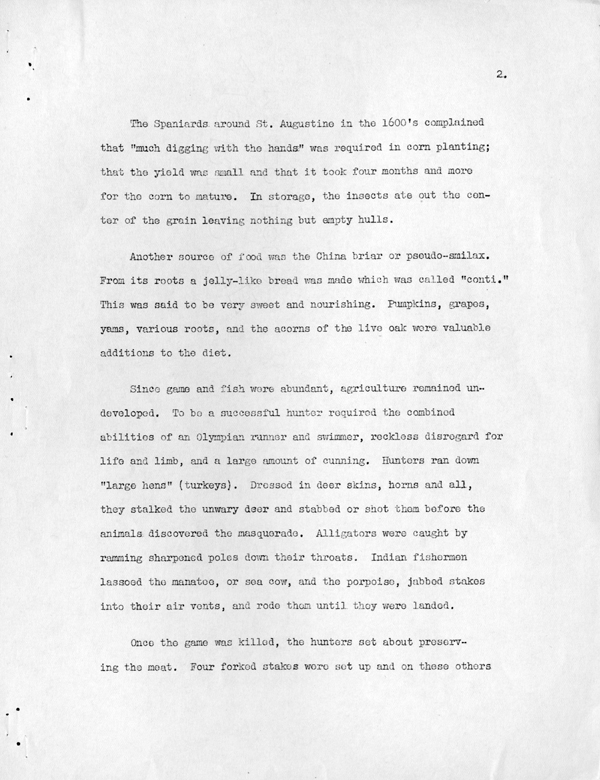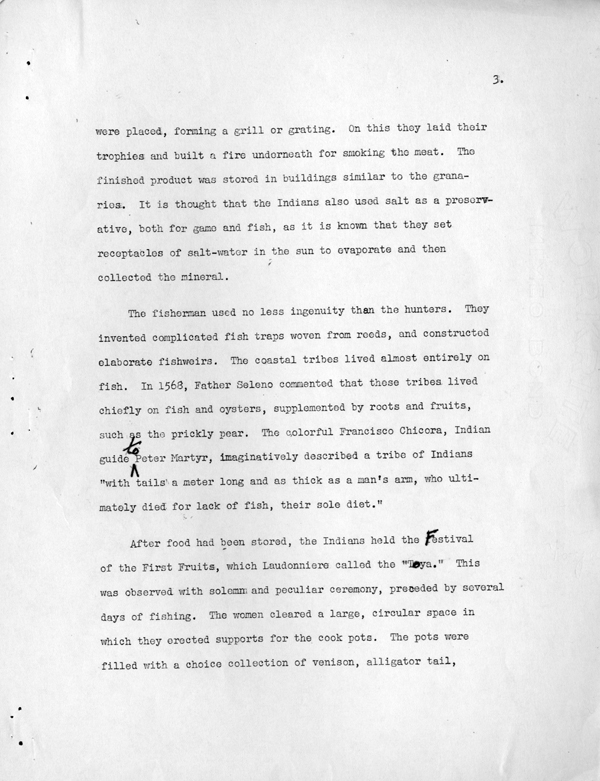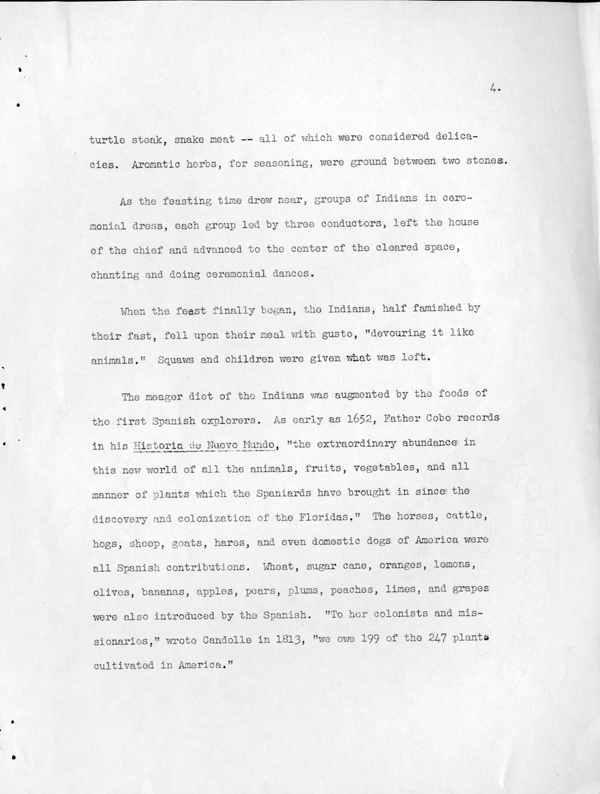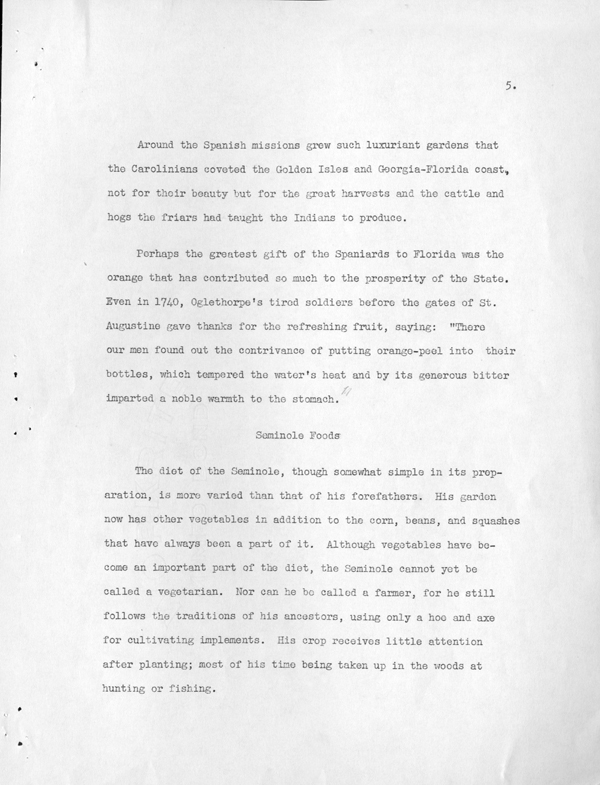Florida Memory is administered by the Florida Department of State, Division of Library and Information Services, Bureau of Archives and Records Management. The digitized records on Florida Memory come from the collections of the State Archives of Florida and the special collections of the State Library of Florida.

State Archives of Florida
- ArchivesFlorida.com
- State Archives Online Catalog
- ArchivesFlorida.com
- ArchivesFlorida.com
State Library of Florida
Related Sites
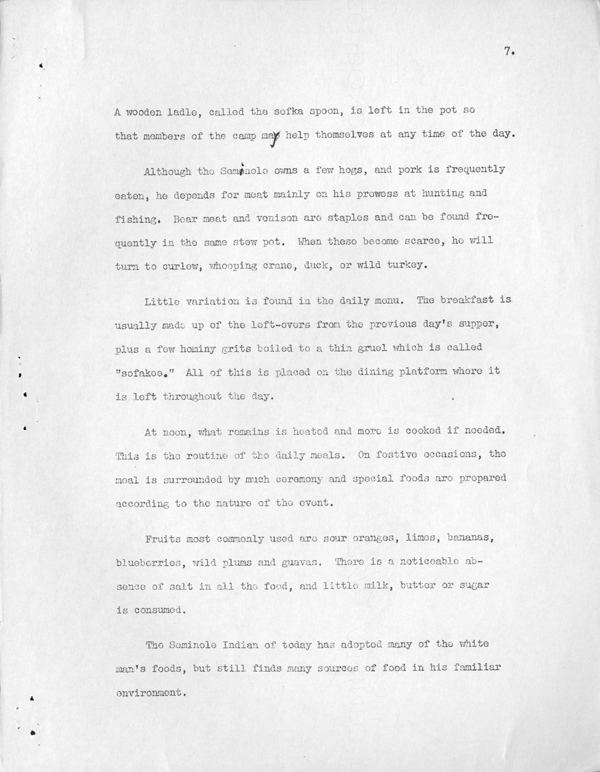
Description of previous item
Description of next item

Title
Published Date
Vegetal foods, such as roots and buds from wild plants, still form
part of his diet. One of the vegetal foods is called "ah-ah," which is the
generic word for potato. This food consists of flour from the roots of the
China briar, or wild potato. The roots, after being carefully washed, are
placed in a large bottle of water. On top of the roots is placed a thick
layer of Spanish moss and on top of this, a strip of the inner fiber of the
palmetto. This is done to keep the steam in the pot. After a few hours
slow cooking, the roots are taken from the kettle, mashed to a pulp,
strained in several waters, and dried. During the drying process, the pulp
is reduced to a brick-colored flour from which the squaws make thin
cakes which they serve with honey. "Countee" is a popular rye-colored
flour made from the roots of a species of palmetto.
The vegetable garden usually contains corn, potatoes, beans, peas,
squash and melons. Of these, corn and sweet potatoes are the most
liked. Corn is used in many dishes and drinks. "Oafka," a popular drink
and a part of every meal, is made by boiling corn with hickory ashes.
"Hum-bux-chay" (come eat) is the Seminole's call to neighbor
and tribesman alike. He is hospitable at the "sofka' kettle. "Sofka," a
stew made by cooking meet thickened with meal, grits or vegetables, is a
standard dish and a large pot of it will almost always be found in some
convenient spot near the center of the camp.
A wood ladle, called the sofka spoon, is left in the pot so that members
of the camp may help themselves at any time of the day.
Although the Seminole owns a few hogs, and pork is frequently
eaten, he depends for meat mainly on his prowess at hunting and fishing.
Bear meat and venison are staples and can be found frequently in the
same stew pot. When these become scarce, he will turn to curlew,
whooping crane, duck, or wild turkey.
Little variation is found in the daily menu. The breakfast is
usually made up of the left-overs from the previous day's supper, plus a
few hominy grits boiled to a thin gruel which is called "sofakee." All of
this is placed on the dining platform where it is left throughout the day.
At noon, what remains is heated and more is cooked if needed.
This is the routine of the daily meals. On festive occasions, the meal is
surrounded by much ceremony and special foods are prepared according
to the nature of the event.
Fruits most commonly used are sour oranges, limes, bananas,
blueberries, wild plums and guavas. There is a noticeable absence of salt
in all the food, and little milk, butter or sugar is consumed.
The Seminole Indian of today has adopted many of the white
man's foods, but still finds many of sources of food in his familiar
environment.
Title
Subject
Description
Source
Date
Contributor
Format
Language
Type
Identifier
Published Date
Image URL
Thumbnail
Transcript Path
Image Path
Image Path - Large
Chicago Manual of Style
Food of the Florida Indians. 1940. State Archives of Florida, Florida Memory. <https://www.floridamemory.com/items/show/181520>, accessed 17 December 2025.
MLA
Food of the Florida Indians. 1940. State Archives of Florida, Florida Memory. Accessed 17 Dec. 2025.<https://www.floridamemory.com/items/show/181520>
AP Style Photo Citation

 Listen: The World Program
Listen: The World Program
